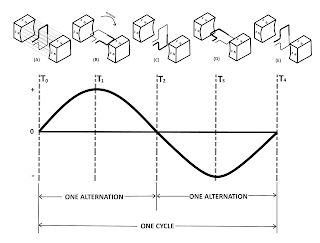Capacitors

By Tim Tolbert In this blog post I would like to explain the overall basics of what Capacitors are, how they work, and how they are made, as I currently understand them to be. A CAPACITOR is a device that stores electrical energy in an Electrostatic Field . The energy is stored in such a way as to oppose any change in Voltage. Inductors oppose any change in Current, while Capacitors oppose any change in Voltage. If two unlike charges are placed on opposite sides of an atom whose outermost electrons (valence electrons) cannot escape their orbits, the orbits of the electrons of the atom are distorted. A simple capacitor consists of two metal plates separated by an insulating material called a dielectric. In the figure below, Part A shows the electrons normal orbits around an atoms proton, for an atom that is suspended between two uncharged bodies (i.e. the uncharged plates of a capacitor): When the two uncharged bodies are charged with opposite charges (such as by being c...



